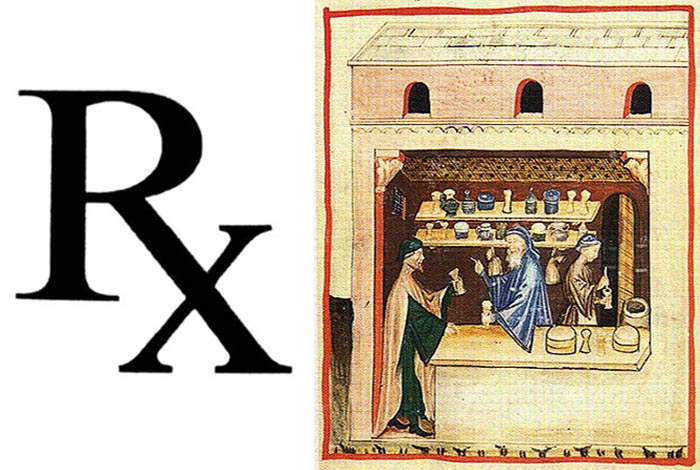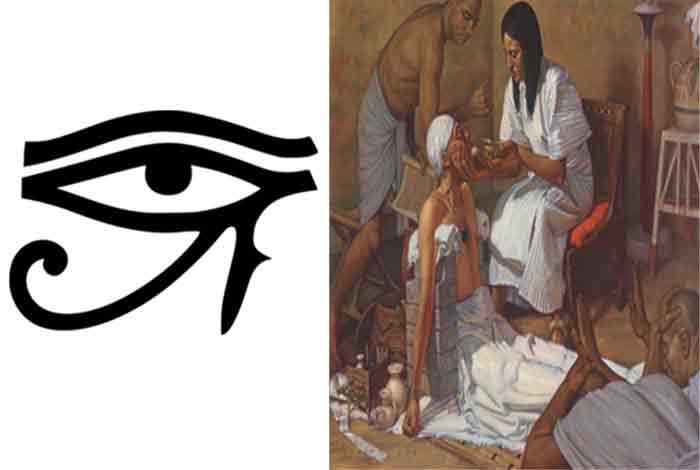
Rx – a transliteration of ℞ – is a symbol, which means ‘prescription.’ It has been used by medical practitioners since the olden times. The use of this symbol is universal although there is still a debate on its origins. There are a few theories that try to define how this symbol became an integral part of medical prescription.
Medieval Latin Abbreviations
Some of the medical documents and Latin prescriptions, belonging to Medieval Europe, show that physicians have been using this symbol since the Middle Ages. Most probable reason behind its usage is that the symbol was then used as an abbreviation for the Latin word, recipere, which means ‘to prepare.’ Physicians used this symbol to just save some time. There is very little debate over this usage in the Middle Ages and a few documents have been discovered that bear this symbol.
The debate, which is still going on, is whether this symbol Rx developed independently or it was passed on from Roman physicians. It is possible that this Latin explanation was applied as a retrospect to a practice that was widely traditionalized by the ancient Greco-Roman physicians.

Roman Religion
Another theory that explains the emergence of ℞ symbol has its roots in the Greco-Roman culture. A similar symbol was used by the Romans for their mythological deity, Jupiter, which many Roman physicians were found to write on their prescrip0tions. Thus, it is quite possible that this practice got passed down from the Roman physicians to the European physicians and the Jupiter symbol got morphed into ℞ symbol in the Middle Ages.
But, now the question arises that why did the Roman physicians put the symbol for Jupiter on their prescriptions? Well, a simple explanation for this practice is that by putting up this symbol, Roman physicians used to pray to Jupiter for protecting their patients. Further, in order to shorten their procedure, they started putting up the symbol for Mercury in their prescriptions.
Another probable explanation is that during the reign of Emperor Nero, there had been a large-scale oppression of Christianity during the 1st century. Roman physicians, therefore, used to put symbol of Jupiter on their prescription in order to demonstrate their rejection of Christianity and support for the Roman religion. These theories are quite plausible in nature and might be even true.

Egyptian Mythology
Another theory extends even further back in the history to the ancient Egyptian culture, according to which, it was believed that the God Horus lost his eye when Seth, an evil deity, attacked him. However, Horus’ mother evoked her magical powers and restored his eye. After this, the eye of Horus started serving as a symbol of healing and protection in the ancient Egypt.
Physicians then began using amulets of the eye in their medical rituals and both the dead and living would wear these amulets for protection. Egyptians cast their influence over the Romans and from them, the symbol traveled to the far-off lands of Greece and Rome and gradually get permeated into their culture.
If this theory is to be believed, it would mean that Roman physicians retrospectively explained worshiping Jupiter and morphed the eye of Horus into a more Jupiter-like symbol. While there a few some similarities between these symbols, we have taken a long leap of faith here in establishing a relation between the ancient Egyptian, Roman and Latin practices.
Nevertheless, there is a possibility that these symbols for prescription were used in isolation and we, in our desperate, attempted to establish a link between them through some imaginable theories. Their similarity in actuality can be just a brilliant case of coincidence. If this is the case, ℞ symbol has been used only since the Middle Ages.
Recipe For Wellness
The late Latin word, recipere, over time, got modified into recipe, which means ‘take.’ By 1580s, the term ‘recipe’ got slightly modified in Middle French into récipé, which implied ‘medical prescription.’ This definition prevailed until mid-1700s when it started being applied to food preparations too.
Eventually, physicians started giving their directives with the command, ‘recipe’ that gradually got abbreviated to ℞. With time, other abbreviations also began to emerge in the medical community, including symbol ‘x,’ such as ‘dx’ for diagnosis, ‘hx’ for history and ‘sx’ for signs and symptoms.











